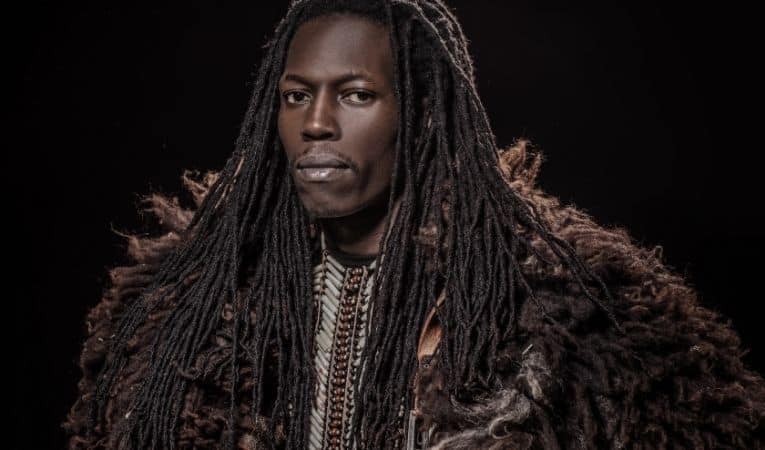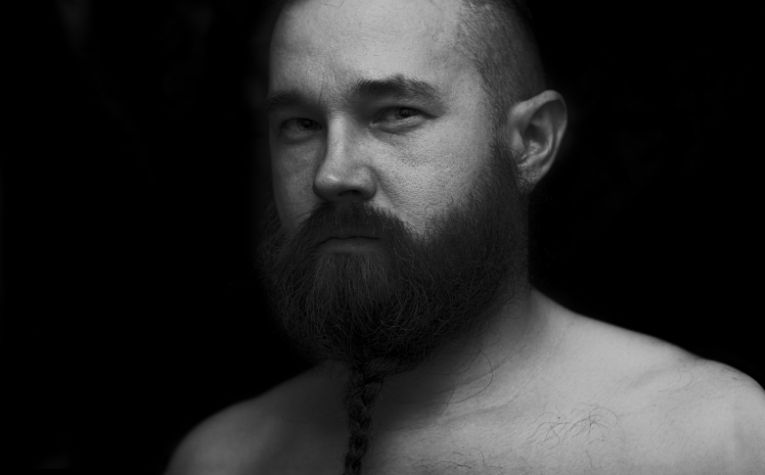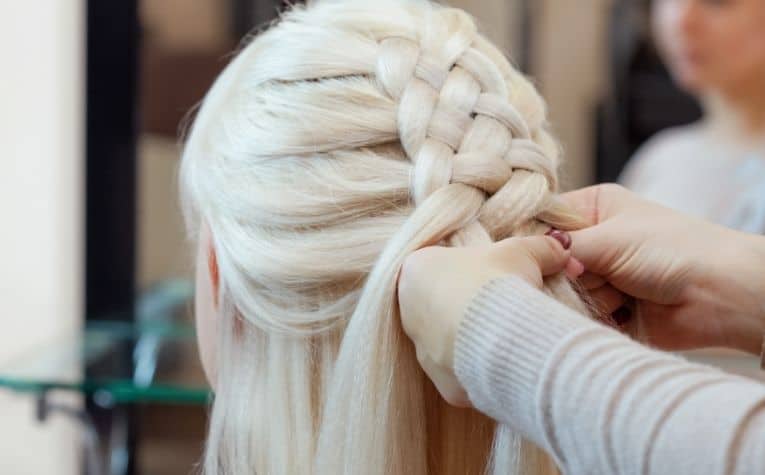In popular culture, depictions of Vikings often portray them as tall with long hair, wearing horned helmets, and wielding axes and swords.
Aspects of this image are true: Vikings did have long hair that was usually reddish or blond.
Yet the common conception that braids were popular in Viking culture is not entirely accurate.
Some Vikings—young women in particular—may have worn braids.
However, braids were likely not the most common hairstyle for most Vikings.
By examining statues and texts discovered from the Viking era, it appears that most Norse warriors wore their hair short, making braids fairly uncommon.
Other hairstyles existed in Norse culture. For example, certain Viking men often wore their hair at shoulder length, and their haircuts likely differed between social classes.
This article will review the current knowledge of how Vikings wore and styled their hair.
Also, see What Did the Vikings Look Like? to learn about their faces, hairstyles, clothing, skin, and more.

The Importance of Hair in Viking Culture
Unfortunately, few sources exist that can tell us how Vikings kept their hair.
Researchers of the Viking age have examined ancient texts, carvings, and statues to learn more about Viking hygiene and daily life in general. [1]
Nonetheless, the evidence suggests that the Norse cared for their hair well.
From recovered artifacts, historians have determined that hygiene and grooming were very important in Norse society.
Some of the most common relics left over from the Viking age are grooming tools, including hair combs. [2]
Vikings also practiced frequent bathing and would comb their hair at least once per day. [3]
Some researchers have speculated that combs were used for the control of lice and nits. [4] (Also see What Hairstyles Did Vikings Have?)
Yet this hypothesis is unconfirmed; few microscopic studies have been performed on Viking artifacts, and what studies have been done did not yield conclusive results. It could be that Vikings simply liked having their hair combed.
Additionally, notable Vikings throughout the centuries mentioned hair in their epithets.
Harald Fairhair and Sweyn Forkbeard were both Viking men of royalty, with mentions of their hair in their bynames. [5]
For hair to be included in Viking titles, hair must have had a high degree of importance in Norse society.
Viking hairstyles were both functional and practical. See Did the Vikings Wear Dreadlocks? to learn more.

Male Hairstyles among the Vikings
In contemporary media, Viking hair is often shown as twisted into long braids or elaborate knots. However, Viking hairstyles probably did not conform to how we imagine them today.
Hairstyles differed between classes and professions.
A true warrior Viking who explored and raided in Viking longships probably wore his hair short on the back of his head and long in the front, in a kind of reverse mullet. [6]
Louise Kæmpe Henriksen, a historian at the Viking Ship Museum in Roskilde, states that “from picture sources, we know that the Vikings had well-groomed beards and hair.
The men had long fringes and short hair on the back of the head.” Fringes likely refer to bangs. [7]
This style would have been the most convenient in battle to prevent enemies from grabbing a Viking’s hair.
Additionally, Vikings would have been able to wear their helmets more comfortably by keeping their hair short in the back. (Also, see Did Viking Helmets Really Have Horns?)
For other professions in Norse society, men reportedly wore their hair long, at least shoulder-length. [8]
According to Mary Wilhelmine Williams, another historian of Viking culture, men would brush their hair back from their faces and secure it with a silk band or sometimes a band of silver or gold. [9]
Bleaching was also a common practice among Vikings. While Northern Scandinavian Vikings tended to be naturally blonde, Danish Vikings were darker-haired and could be redheads or brunettes. [10]
Darker-haired Vikings would use a lye bleaching agent to stain their hair and beard a lighter, straw color.
So, though Viking men usually wore their hair long — except for Viking warriors, who probably wore their hair very short, with longer bangs in front — the photographic and textual evidence that we have today does not support the idea that male Vikings wore braids as a common hairstyle.
Were the Vikings diverse? See Were There Black Vikings? to learn more.

Female Hairstyles among the Vikings
Even if braids were not a male Viking hairstyle, braids were occasionally worn by Norse women. Unmarried girls could wear their hair, either loose or braided, to signify their unmarried status in society. [11]
According to Williams, their hair could be so long that some girls would tuck the ends into their belts. [12]
On the other hand, married women wore their hair up, usually coiled in a bun at the backs of their heads. [13]
Sometimes, this bun would be covered with a small cap or hood and could be more or less ornate, depending on the wealth of the woman’s husband.
Recovered carvings from the Viking age also reveal that Norse women wore ponytails in addition to the coiled bun.
In fact, the ponytail was likely a popular hairstyle, as depictions of women with ponytails are frequently found on Viking picture stones and gold pieces. [14]
Viking ponytails could be plain but could sometimes include a coiled knot at the top of the tail.
Yet hairstyles for Norse women were not limited to coils or braids. Headscarves and hair ornaments were popular among Norse women. [15]
Viking women had a variety of hairdressings to choose from, including pins, combs, hoods, and rings. These ornaments could be simple, made from linen or wool, but they could also be more ornate and studded with small gems.
Of the genders within Norse society, it appears that females wore braids far more often than men.
Yet even then, it was more common for married women to wear coiled buns and unmarried women to wear their hair loose or in a ponytail.
Also, see What Did the Vikings Wear? to learn more.
Hair as a Social Signifier
Viking society was divided into several social classes, and hairstyling could have been an important marker of a Viking’s status.
We have already seen that Viking warriors would have had a distinct, reverse-mullet haircut to set them apart from men of other professions.
Married women and maidens also had different hairstyles.
Some researchers speculate that coiled ponytails could have been a sign of social status for elite women.
To maintain long, healthy hair, constant hair maintenance is needed to keep the hair from breaking or tangling.
Coiled ponytails require very long hair, so the women who wore them must have had the resources to care for them.
We see further evidence of hair being used as a social marker when we look at the haircuts of the lower classes.
Thralls, or slaves living in Scandinavia, were known for having their hair cut short.
Both female and male thralls kept their hair shorter than free Norsemen, making them easily distinguishable. [16]
Because of the social context that hair provided in Viking society, it is no wonder that Vikings made good use of hair combs and kept their hair well-maintained, especially for the era.
Separating fact from fiction
Modern portrayals of Vikings often depict Norsemen with braids, coils, and dreadlocks in their hair, but Vikings did not wear braids often. [17]
The typical reference to Viking implies the Norsemen who raided the coasts of England, and these men would not have worn braids.
Instead, Viking warriors wore their hair long in the front and short in the back.
This would have helped warriors in battle, kept helmets settled on their heads, and prevented their enemies from grabbing at their hair.
Of the people living in Norse society, young women would have worn braids the most.
However, they could also choose to wear their hair loose, and from archaeological evidence, it seems that ponytails were the more popular hairstyle for young women.
Therefore, although modern versions of Viking hairstyles are popular today, the styles containing braids are, unfortunately, not accurate to how Norsemen looked during the Viking age. [18]
References:
[1] Source
[2] Ibid.
[3] Source
[4] Source
[5] Source
[6] Source
[7] Source
[8] Source
[9] Source
[10] Source
[11] Source
[12] Williams
[13] Source
[14] Source
[15] Source
